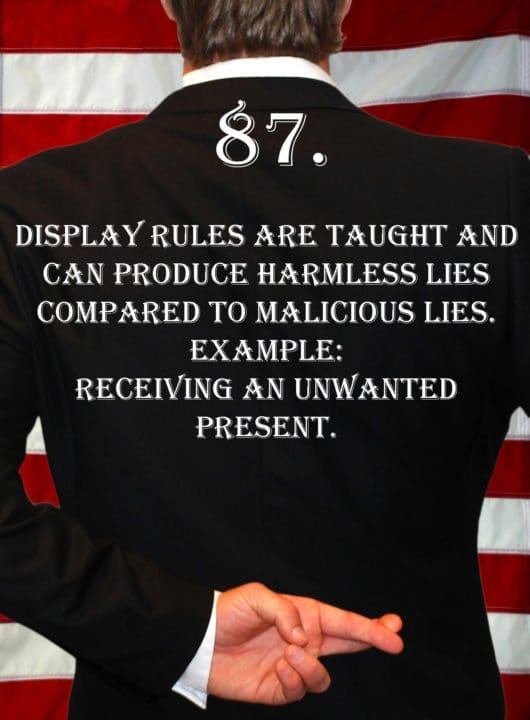
Deception Tip 74:
Watch, and listen, for sighs, as they often come before heavy contemplation of an answer.
Listen To The Podcast!
E74 – Sighs – Deception Tips Podcast – Click Here To Subscribe
Podcast Transcript
Hello and welcome to the Deception Tips podcast where you will learn amazing cues to detect deceit that will help you read people like never before. I’m your host Spencer Coffman, let’s get started.
Hello and welcome to deception tip episode number 74. Today, we’ve got a cool tip in store for you, it’s one that we haven’t touched at all yet, however, I’ve mentioned it a couple of times, in addition, it’s related to several other tips.
We’ve talked a lot over the past year and a half about different tips related to breathing. We’ve had several episodes dedicated to something with breathing and how liars will breathe or exhale or something like that and a few of those are related to the tip of today.
So, I’m going to recap all of the little breathing episodes that are related, I’m not going to touch all of the breathing episodes. However, if you want to examine more episodes on breathing, I encourage you to take a look at the deception tip videos on the body language YouTube channel. What you do there is click on the playlist and take a look at the breathing playlist or the playlist with all of the videos related to breathing.
That will give you a quick overview of each video, of each deception tip related to breathing then you can take those deception tip numbers because they’re all the same. So, if you go on and you click on one of the breathing episodes in the videos and it’s episode 46, pursed lips, you watch that and you say well, I want to know more, well, guess what, it’s super convenient.
The same number is going to be in the e-book, it’s deception tip 46, the same one is going to be in the revised and expanded edition of the books, so you can read about it, the same one is going to be the podcast, you can listen to it.
So, check out the videos, look at the playlist, and get an idea of the different ones, you can recap them all right there. So, right now we’re going to dive into an overview of all of the breathing-related episodes that are related to this tip.
As I mentioned, episode 46, pursed lips, is one of them, how I mentioned that liars may purse their lips and then slowly exhale through them to pacify the stress and tension involved in telling a lie.
In another one, episode 54, breathe rapidly, some liars may be breathing rapidly then, after a little while, you’ll hear a long, slow exhale done like a relief.
Then episode 63, chimpanzee lips, how liars may have lips like a chimpanzee that they’re going to breathe out of or puff up like that blowfish that we talked about before but they’re going to go in through the nose and out through extended lips like the chimpanzee. We did also speak of how they may puff up their lips and blow out like a pufferfish.
Anyway, moving on to episode number 66, we talked about a deep breath, how liars may hyperventilate and then take a long, deep breath of relief or pacification like finally, they are relieved that it’s over, that the lie is done.
Something typically associated with a long breath of relief is a sigh of relief and if you remember in a couple of those episodes, I mentioned how we’re not talking about the sigh of relief here, this is just a deep breath or breathing relief.
Well, guess what, today we’re finally there, we’re talking about the sigh of relief. Sighs are something that can happen after, so after they’re done breathing, they’ve done this stuff, they’re relieved, and now they’re just going to sigh because it’s done, it’s over with. They’re like, yes, it’s done, I’m so relieved, I’m so happy or they may sigh as in the typical sigh of contemplation.
They sigh and then that’s when they expect the people around them to go, what’s wrong, what’s going on? Well, I got this big decision I’ve got to make blah blah blah and it gets on like that.
So, without further ado, here it is, deception tip number 74. Watch and listen for sighs as they often come before heavy contemplation of an answer. Here it is again, deception tip number 74. Watch and listen for sighs as they often come before heavy contemplation of an answer.
So, sighs come before heavy contemplation of an answer and I mentioned it as a relief. What you’re looking for is the former, you are going to be interrogating people, interacting with people. When you’re speaking to them and trying to root out whether or not they are telling the truth, that means you are going to listen and watch for these sighs because these sighs often come before the lie may be told.
If they are contemplating an answer, they’re contemplating whether or not they’re going to tell you the truth or whether or not they’re going to tell you some mixed-up version of the truth or part of a lie or what they deem is a white lie or whatever the case may be, they might sigh as they process that.
Sighing could also be another stalling tactic, so keep that in mind, they may be doing this to buy themselves a little bit more time. Even so, it’s something that happens when people are thinking more about what they’re going to say next. In addition, it is more relief of what they have previously said, so you’re going to hear it in those two circumstances.
Today, we’re focusing more on the prior, the before the answer, so when you pose a question to someone, when you are interrogating them, or you’re asking them whether or not they did this or that, listen for that, pay attention to the body language, the sigh. Remember another thing, sighs as according to this tip, remember it says to watch for and listen for because there are two different sighs.
You can either have one where someone is audibly sighing or there’s a sigh of body language like that slump, the entire deflation of the person’s body. They can sigh visibly as well as audibly, so you’re watching for both of these, it’s almost like a shrug of the entire body. Right before they answer, they may slump and then give you their answer or their story about whatever they are planning on saying.
It is up to you to determine whether that was a contemplation or it’s a heavy answer, you know that it is already. Now you need to watch for the other body language signs that go after that and during their story to determine whether or not they’re telling the truth. We’re going to dive a lot more into each and every one of those coming up right after this.
How would you like to stay sharp when it comes to reading people? Get the deception tips emails delivered to your inbox each week, sign up today on spencercoffman.com.
Welcome back to episode 74 where we are talking about sighs. A quick reminder is that there are a couple of different kinds of sighs, one that would happen before, that is the one we’re talking about today, it’s heavy contemplation of an answer. You’re typically going to hear it or see it before someone gives their response or before they tell their story.
Then you have the one after, this is the sigh of relief, this is what the breathing episodes we’ve talked about were about. They were all long exhales of relief, typically you would have a sigh with that. It could be with or they could just be an exhale, or it could be a sigh, or it could be both.
So, that is afterward, after they’re done telling their story, they’re done stating their position, they’re going to let out that sigh of relief, like glad it’s over the type of a thing.
Then with that, you have two types of sighs in addition to those two instances of sighs. One is the audible sigh that you can hear, the other one would be a visual sigh, this is the kind that is like a sighing of body language.
It’s as if they’re fully inflated and then all of a sudden someone lets out a little bit of air and they deflate. Their shoulders go down, it’s like a reverse shrug, they just sink or slump down.
That is like a sigh of the body language, there can be two kinds, so you need to listen and watch for them. What do they mean? Well, when one comes before that statement or answer, it could mean several different things. They could be buying some time as in, they need to think about their answer, or they want to rephrase, or they want to regroup their mind to get ready to deliver whatever story that they have.
So, this sigh could be a little time buying because obviously, it takes a second or two, it’s not a lot of time but it’s enough. Just like repeating the question, we talked about that in episode 43, when liars may repeat the question in order to give themselves a little bit more time to answer it.
The other one was in episode 64 with rephrasing the question, how liars can rephrase the question and then answer it in an effort to give themselves more time to plan or think about their response.
So, this is another instance, they may sigh to give themselves a little bit more time to read the situation and come up with the best way to deliver their answer.
Whether that’s an audible sigh or a visual side it’s still done in an effort to give themselves a little bit more time to relax right before that moment of stress or that moment of tension when they are going to present that lie to see if you’re going to believe it. They want to clear their head, that’s that meaning or that portion.
The other one is a form of contemplation, so they’re going to sigh in an effort to think about it now. In this one, you’re going to have more of a pause between the sigh and their response because they are thinking about whatever they’re going to say.
This isn’t the regrouping, this isn’t the part where they’re sighing to reset and then get rid of the stress and then deliver that lie or that story, whether it is the truth or whether it is false.
This is more like thinking of a heavy answer, they are determining what they’re going to do next. This is probably done before they’re giving you the story or before they’re giving you the answer.
This you may hear when someone is about to ask you for advice or when someone has already done something or when they’re planning to do something. They sigh because they’re going to think about the pros and the cons of whatever that situation or whatever that outcome could be.
This is the decision-making sigh, this is the one that people usually do audibly when they’re expecting other people around them to come up and say, hey, how’s it going, what’s wrong, what was that for, or what’s on your mind?
They’re going to use that side to prompt or solicit people’s interactions so that they can start talking with someone and they start interacting with someone to hopefully gain a better understanding of whatever situation they are about to encounter.
Anytime you see these or hear these you need to be thinking that well, is it before something is about to happen, or is it after something has happened. If it’s before then they’re either contemplating or they’re getting ready to deliver, if it’s after then it’s some form of relief. If it’s before and they’re contemplating, what are they contemplating?
Are they about to do something stupid or are they about to do a big life change or a big decision or if it’s before, are they about to deliver some kind of a story? Are they about to lie to you? Are they about to give up some kind of concoction? So, whatever comes next, if they sigh and things are done then you see okay well, it must have been after and they’re relieved.
You can say, “Hey what’s going on? What are you relieved about?” Or if it’s before and they sigh, do they start talking, or are they silent? If they’re silent, they’re probably waiting for you to give them some advice or to help them out. If they start talking, they’re delivering something and, in that case, start paying attention and watch out for other signs of deception and other signs of body language.
They may be starting to either tell you a story that could be fictitious or they’re laying out a narrative of stuff that happened that they’re going to either ask you a question about and want some advice or they’re telling you a lie. They’re hoping that you believe it and that they get away with something whether they’re covering it up, they’re hiding something, you never know.
That’s why it is so important to listen for the different patterns and clusters of behavior that may occur. Not only listen for them but watch for them because there are a lot of visual signs as well as auditory signs. Keep that in mind because there will be a number of them. So, if you miss one don’t worry because as we said before, there will always be more.
Remember the conscious and the unconscious are fighting back and forth, the conscious wants to get away with that lie and the unconscious wants the truth to come out. It will stop at nothing which means there will be leakage after leakage after leakage, sign after sign after sign and it’s your job to notice them and pick them up.
I want to thank you for listening to this week’s episode of the Deception Tips podcast. I hope that you’ll share it with your friends, subscribe to the feed, take a look at the deception tips videos, the blog, and check out the books I have available and as always, tune in next week for a new deception tip.
Video Transcript
Hey guys, my name is Spencer Coffman, thank you for watching the deception tips videos. They’re all about teaching you how to read people and detect deception so that you will be able to tell if someone is lying to you. Today, we are going to talk about an audible sign that is something that people do when they are deciding something or if they’re in heavy contemplation of something that may be going on.
So, you may experience this when you’re asking someone for the truth, you may also experience it when someone is simply contemplating it without even being asked. Maybe they’re thinking about something really heavy and they’re going to give this gesture or behavior, it’s an audible type gesture or behavior that you’ll hear when they are going through that.
There are a few other reasons why someone may display this sign as well and we’re going to come to those but for now, here it is, this is deception tip number 74. Watch, and listen, for sighs, as they often come before heavy contemplation of an answer. As I said, it’s heavy contemplation, like if someone is sitting there and they can’t decide whether or not they are going to tell the truth.
Maybe they’ve been lying, maybe they’ve been having this conversation and all of a sudden, they start to wonder, is it really worth it anymore? So, they give you that sigh and it’s almost like that deep breath and it could be like the one I gave you or it could be that audible long ‘awwww’ type sigh that someone is going to give when they are thinking about, “You know what, maybe I should just tell the truth and get it over with and move on and it’s just done with, it’s not worth the stress.”
So, listen and watch for those because sometimes they may not be audible, that’s why you have to watch. It could sometimes be just a big heaving of the shoulders and their whole body sighs with them. Sometimes it’s audible and there’s nothing you can see or sometimes it’s a full body an audible sigh that you’ll see, the whole works. That comes before that heavy contemplation of an answer where someone is just really thinking, or they may be ready to talk.
So, listen and watch for those because sometimes they may not be audible, that’s why you have to watch. It could sometimes be just a big heaving of the shoulders and their whole body signs with them. Sometimes it’s audible and there’s nothing you can see or sometimes it’s a full body audible sign that you’ll see, the whole works. That comes before that heavy contemplation of an answer where someone is really thinking, or they may be ready to talk.
For example, if you haven’t been talking with someone and maybe whether it’s an interrogation situation where you’re in one room and they’re in another and all of a sudden you’re looking at them through that 2-way glass and you see that sigh happen. You say, okay, now it’s time to go in, they’re ready, they’re ready to talk, they’ve been contemplating it, they’ve made this decision and now they’re ready to talk. Whether they’re ready to talk about the truth or a lie, we don’t know but they’re ready to talk.
If it’s something that isn’t in that situation, maybe you’re driving in a car and you’ve got two people and somebody signs, then you say, “Hey, what’s going on?” Or your kids when you’re a parent, you have kids and one of them comes into the kitchen and they sigh and you say, “Hey, what’s happening?” You know that there’s something on their mind, something is going on, it’s something heavy, they’ve been thinking about it.
They’ve obviously had a little bit of stress or anxiety about it and now they’ve signed because they’re releasing some of that stress, tension, and anxiety. Sighing is like a comforting gesture, if you remember we’ve talked about a lot of different comfort gestures over the past several episodes in these deception tips.
Those are the things that the sigh can provide a little bit of relief from tension, stress relief, and comfort. When someone sighs, they may be looking for even more comfort in talking to someone and getting something off their chest. That’s something that you will want to pay attention to, watch for, and listen for because they may be ready to talk.
So, if this is your first time watching these videos, I’d love to have you subscribe to the channel on YouTube. Feel free to comment with any questions you may have as well. Also, if you’d like some more information, we have books, blog posts, and podcasts all available on spencercoffman.com that are dedicated to teaching you exactly what every body is really saying.
Until next time.






